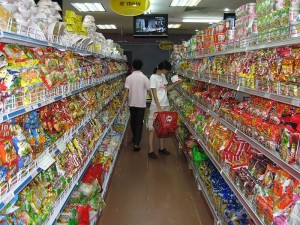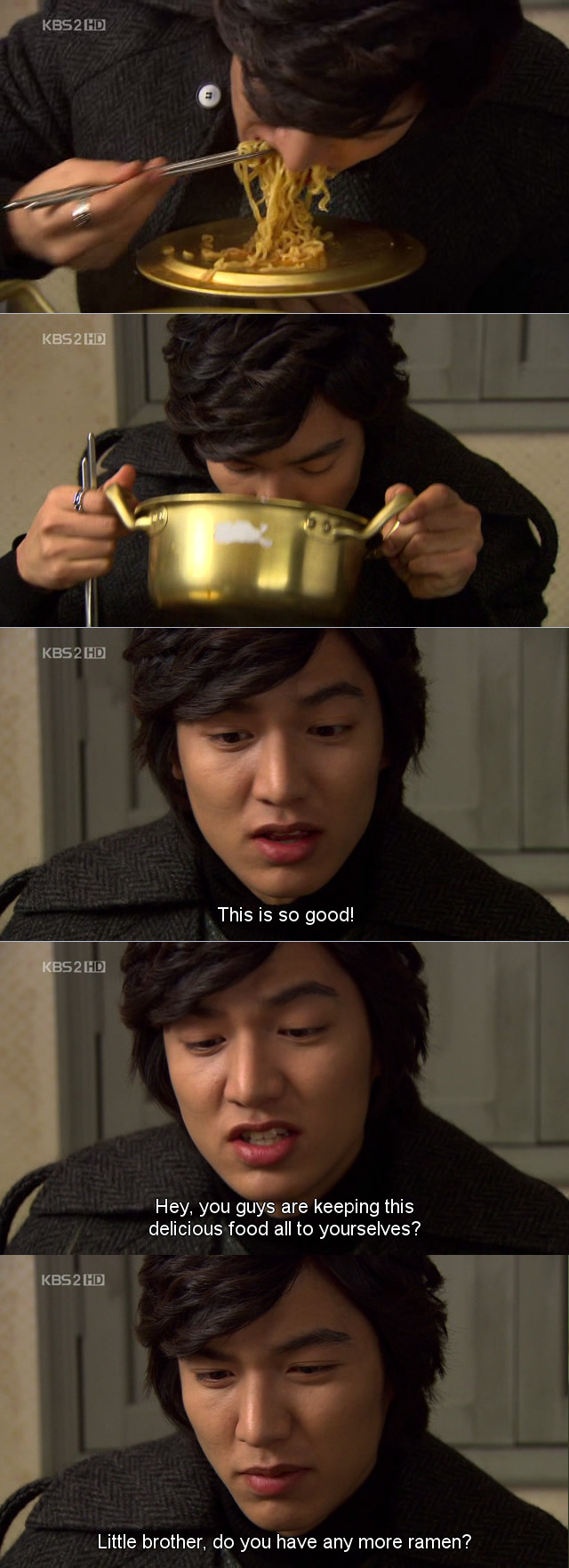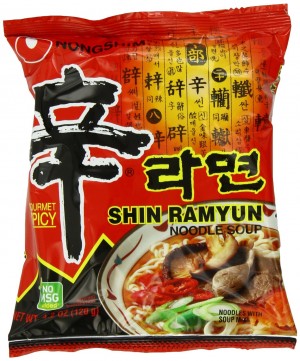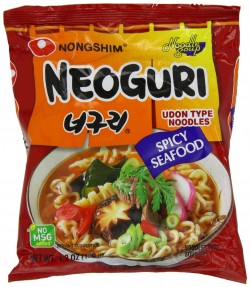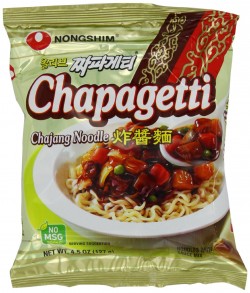As I watch more Korean Dramas, I become more interested in Korean Food as almost every Korean Drama as plenty of scenes where people are eating, cooking. Some looks awful, for example, when they talk and chew at the same time, and some looks interesting enough for me to try that food for my self.
Guest Author: Pamela Morris from Yummy Recipes
Korean Cuisine with Side Dishes
I ate out a lot at Korean BBQ type restaurants but watching Korean Dramas have made me appreciate Korean Cuisine much more and want to learn more about it. Korean cuisine is largely based upon rice, vegetables, and meats. Traditional Korean meals are noted for the number of side dishes that accompany steam-cooked short-grain rice. Kimchi is served often, sometimes at every meal. Commonly used ingredients include sesame oil, doenjang (fermented bean paste), soy sauce, salt, garlic, ginger, pepper flakes and gochujang (fermented red chili paste). Ingredients and dishes vary by province. Many regional dishes have become national, and dishes that were once regional have proliferated in different variations across the country.
What Kind of Staple Korean Cuisine Use:
Grains:
During the pre-modern era, grains such as barley and millet were the main staples and were supplemented by wheat, sorghum, and buckwheat. Rice is not an indigenous crop to Korea, and millet was likely the preferred grain before rice was cultivated. Rice became the grain of choice during the later period. Rice is used to make a number of items, outside of the traditional bowl of plain white rice. It is commonly ground into a flour and used to make rice cakes called tteok in over two hundred varieties. It is also cooked down into a congee (juk), or gruel (mieum) and mixed with other grains, meat, or seafood. Koreans also produce a number of rice wines (soju), both in filtered and unfiltered versions.
Vegetables:
Soybeans are most used and are made into tofu, while soybean sprouts are sauteed as a vegetable and whole soybeans are seasoned and served as a side dish. They are also made into soy milk, which is used as the base for the noodle dish called kongguksu. A byproduct of soy milk production is okara (kongbiji), which is used to thicken stews and porridges. Soybeans may also be one of the beans in kongbap, which boil together with several types of beans and other grains, and they are also the primary ingredient in the production of fermented condiments.
Mung bean sprouts, are often served as a side dish, blanched and sautéed with sesame oil, garlic, and salt. Ground mung beans are used to make a porridge called nokdujuk, which is eaten as a nutritional supplement and digestive aid, especially for ill patients. A popular snack, mung bean pancake is made with ground mung beans and fresh mung bean sprouts. Starch extracted from ground mung beans is used to make transparent cellophane noodles (dangmyeon). The noodles are the main ingredients for japchae (a salad-like dish), a subsidiary ingredient for soups and stews. Azuki beans are used a lot in various ways in Korean Cuisine.
Meat:
Korean people love their meat and has lot of beef, pork, chicken, fish, seafood are used local cuisine. Being mostly vegetarian, I know little about it meat dishes. One interesting thing my Korean friend said that, they also eat “dog meat”, which seems very strange liking dogs as a pet in American culture, to say the least.
Korean Cuisine Types:
Korean Cuisine is mainly soup and stews which they use not only as a starter but as part of main course meal. Kimchi is eaten with almost all meals, including breakfast, lunch and dinner. Noodle, variety of side dishes and alcoholic drinks generally make up a typical Korean meal.
Soup/Stews:
Soups are a common part of any Korean meal. Unlike other cultures, in Korean culture, soup is served as part of the main course rather than at the beginning or the end of the meal, as an accompaniment to rice along with other banchan (side dishes). Soups known as guk are often made with meats, shellfish and vegetables. Soups can be made into more formal soups known as tang, often served as the main dish of the meal. Jjigae are a thicker, heavier seasoned soups or stews.
Stews are referred to as jjigae, and are often a shared side dish. Jjigae is often both cooked and served in the glazed earthenware pot in which it is cooked. The most common version of this stew is doenjang jjigae, which is a stew of soybean paste, with many variations; common ingredients include vegetables, saltwater or freshwater fish, and tofu.
Korean Noodles:
Ramyoen is common noodle eaten by everyone. They even have a special cookware used to make Ramen noodle and eaten from the pot itself. Noodle with clear broth or liquid, buckwheat noodles, cold noodle soup, cellophane (clear) noodles salad and soup are popular and can be made with meat, tofu and vegetables.
Side dish/Banchan:
Korean cuisine is known for its vast variety of side dishes that one can see from table set (as shown in image above). At traditional restaurants, meats are cooked at the center of the table over a charcoal grill, surrounded by various banchan and individual rice bowls. The cooked meat is then cut into small pieces and wrapped with fresh lettuce leaves, with rice, thinly sliced garlic, ssamjang (a mixture of gochujang and dwenjang), and other seasonings.
Banchan can be steamed, grilled, raw or marinated (with vinegar, salt and seasoning) dishes. Anju are side dishes that can be eaten during drinking soju or rice wine.
Click here Korean Recipes and Cookbooks
Kimchi:
Kimchi refers to often fermented vegetable dishes usually made with napa cabbage, Korean radish, or sometimes cucumber, commonly fermented in a brine of ginger, garlic, scallions, and chili pepper.There are endless varieties with regional variations, and it is served as a side dish or cooked into soups and rice dishes.
Koreans traditionally make enough kimchi to last for the entire winter season, as fermented foods can keep for several years. Kimchi is packed with vitamin A, thiamine B1, riboflavin B2, calcium, and iron. Its main benefit though is found in the bacteria lactobacilli; this is found in yogurt and fermented foods. This bacteria helps with digestion. South Koreans eat an average of 40 pounds of Kimchi each year.
Drinks:
Korean cuisine will not be complete without drinks (alcoholic and non-alcoholic) both. Non alcoholic drinks has following categories: tea, hwachae (fruit punch), sikhye (sweet rice drink), sujeonggwa (persimmon punch), tang (boiled water), jang ,(fermented grain juice with a sour taste), suksu ( beverage made of herbs), galsu ( drink made of fruit extract, and Oriental medicine), honeyed water, juice and milk by their ingredient materials and preparation methods. Among the varieties, tea, hwachae, sikhye, and sujeonggwa are still widely favored and consumed.
Click here to read full article: Introducing Korean Cuisine.


